Tell me if you’ve heard this one before.
A Halfling Rogue-Mage, an Avian Elf, and a Dwarven Wizard walk into Thunderstone Keep…
No? Well, now’s your chance to live the story!
Thunderstone Quest is a deck-building game of fantasy adventure published by Alderac Entertainment Group (AEG). This is the latest in the line of Thunderstone deck-building games originally created by Mike Elliott in 2009. Whereas older Thunderstone games served as standalone sets with a loose story, Thunderstone Quest adds a campaign mode. Stalwart adventurers progressively unlock new cards, dungeon setups, items, spells, and heroes as they unravel the story of the Stormlands.
In this review, I’ll be delving into the the “Champion” edition of the game, which comes with a premium box, and two more quests than the regular edition.

An Avian’s-Eye View
The entirety of the campaign of Thunderstone Quest is a series of five quests, each of which have 3 adventures (which are a thematic way of saying “game setups”). To begin, players select which quest they are doing, and unwrap the corresponding packs of cards labeled for that quest. A Quest Book is included in the box which directs players which cards they should use for each adventure.
Players begin by setting out the appropriate cards for their adventure onto the Village board, and place their starter cards on their player boards. Every adventure of Thunderstone Quest begins with the same deck of twelve cards, including six “Level 0” Adventurer cards (the Steve Urkels of your party), two basic weapons, and four utility cards that provide basic effects like money and “light.” More on “light” later (I’ll keep you in the dark on that for a bit). Players will also select a figurine to represent themselves as a “Champion.”

Each turn players will draw 6 cards and choose whether they are going to visit the Village or dive into the Dungeon. Over the course of an adventure, players will buy more powerful (and higher point value) weapons, spells, and items to bolster their heroes. Players will also level-up their heroes as they destroy deadly creatures in the dungeon. Each time an enemy is eliminated, players may discover a Guardian Key. Once the 4th Guardian Key is revealed the final boss of the dungeon is summoned. All players get to take one big swing at the baddie before proceeding to end-game scoring. Players calculate points based off of cards in their deck as well as unspent experience points awarded during the game. Whomever has the most points is the new Champion of Thunderstone Keep!
The Village
No, we aren’t going to discuss the movie by the guy who butchered The Last Airbender. The Village is a safe place in Thunderstone Quest where players can recover, gear up, and prepare for fighting monsters in the dungeon. When a player draws a hand of cards loaded with money, chances are they’ll want to head to the Village where they can buy a new card for their deck. Players can also heal a wound and level-up one hero if they go to the Village.

On each visit, players will select one of the following locations in the Village to place their Champion to gain bonus effects;
Players can visit The Bazaar to buy a healing potion, a lantern (to generate light in the dungeon), and iron bars (which can boost heroes or add extra gold to a player’s hand).
The Temple allows players to heal an extra wound and manipulate their next hand.
The Shop of Arcane Wonders holds valuable treasures that cost a huge amount of gold, but can quickly beef up a player’s deck.
The Guilds’ Quarter is the place where heroes gather, and allows players to level-up an extra hero on their turn.
The Dungeon
If a player draws a sizeable attack on their turn, they’ll likely want to place their Champion in the dungeon. The dungeon is represented by 7 tiles laid together in a grid. The surface and first level of the dungeon can be accessed almost any time. But to get to the second and third levels of the dungeon, players will have to generate “light.” This is sometimes found on the bottom- left corner of cards, but is also generated through card abilities and by spending lantern tokens. Light provides tempo to the players’ activities in the dungeon as players will have to build up their deck to generate sustainable light for these lower-level excursions.

Once in the Dungeon, players will attack the face up enemy card in the room they are in. Enemies come in all shapes and sizes, and often damage Champions who fight them by giving wounds. The more wounds you have, the less cards you draw on future turns until you heal. Players who defeat an enemy can be rewarded with tokens, treasures, and most importantly, experience points. Experience points are represented by tokens that players can spend to level-up their hero cards, while unspent experience tokens will be worth a point each at the end of the game.
Weighing the Components

Thunderstone Quest is a massive game in an engorged box. My jaw hit the floor when I saw that it was the same depth of my Gloomhaven box, and I quickly wondered if they had fit some actual live halflings in there. The bottom of the box is lined with sealed decks of cards that contain the packs you need for your adventures. On top rests a tray that holds player boards, dungeon tiles, miniatures, and wooden tokens. Brilliantly designed, this tray has cloth handles built into its sides so you can easily lift it out of the box and get to the cards underneath.
As you peel back the cellophane wrapped around the adventure decks, your eyes will lock onto the gorgeous art. Colorful, detailed, and exciting, the art entices you to keep playing so that you unlock more cards and add them to your gameplay options. The dungeon tiles are simple, but capture the ominous environments well. I was surprised at the detail of the minis. Although they simply serve to mark which location the players take their actions, they are a nice flourish among the other high-quality components.
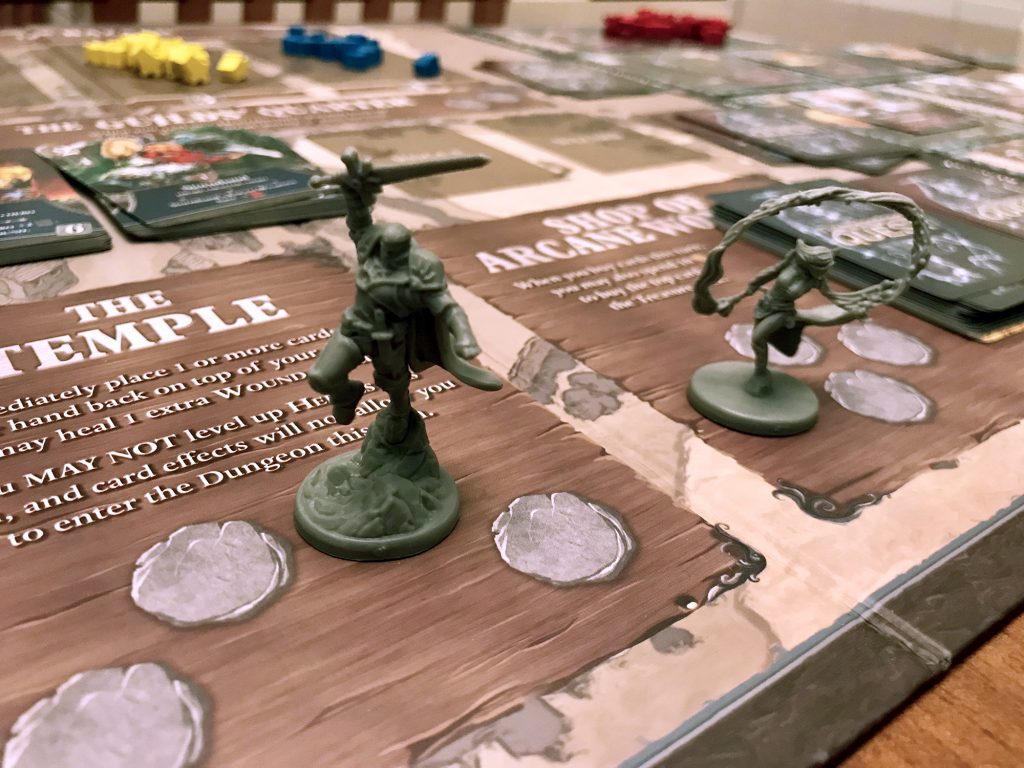
If you’re going to save the Stormlands, you’ll need to organize yourself. The cleanly designed player boards have spaces for everything you’ll use in the game: your draw and discard piles, gear tokens, experience tokens, and wounds. In the same vein, the box also comes with dividers to help organize your card collection. As you unwrap your adventure decks, you will also gain the corresponding dividers for every category of card in the game including heroes, items, spells, guardians, treasures, monster groups, and legendary items. Functional and bountiful, AEG delivered mounds of component goodies that the greediest of dragons would want to hoard.

You Can Delve If You Want To, You Can Leave Your Mage Behind
In many other deck building games like Dominion, your resources are split among different categories of cards. For example, currency is often placed on entirely separate cards from your action or attack type cards, which are separate from your victory points cards. This often leads to uneven hands that can leave players stalled during the game. In Thunderstone Quest, cards have money, attack, victory points, and light all incorporated in varying amounts onto each card. As you draw your hand, you’ll always have something you can do. Maybe you didn’t get the large attack you wanted but chances are, you have a lot of money to compensate and can buy powerful attack options in the Village.

A frustrating rule in many deck builders is that you cannot use excess money once you make a purchase. In Thunderstone Quest, it’s not so bizarre to head to the bazaar to make use of your extra change. After you buy a card you can use leftover money to buy an iron bar, lantern, or potion token. These items provide you with backup options when you draw a less than desirable hand, without cluttering your deck. If you find your card draws weak in money or in light, buying these tokens can help supplement your deck until it is stronger. This bazaar location added to the feeling that I could always do something with my turns, and supplement the areas where I was Urkeled.
I do feel that the display of armor and magic resistance on enemy cards could be improved. Some enemies are resistant to physical attacks, and some are resistant to magical attacks. These are represented by numbers in a bubble within the health number, which represent the amount of attack you must reduce if you are attacking with the corresponding type. It’s not as complicated as common core math, but it still presents a fiddly way of calculating your attack damage.
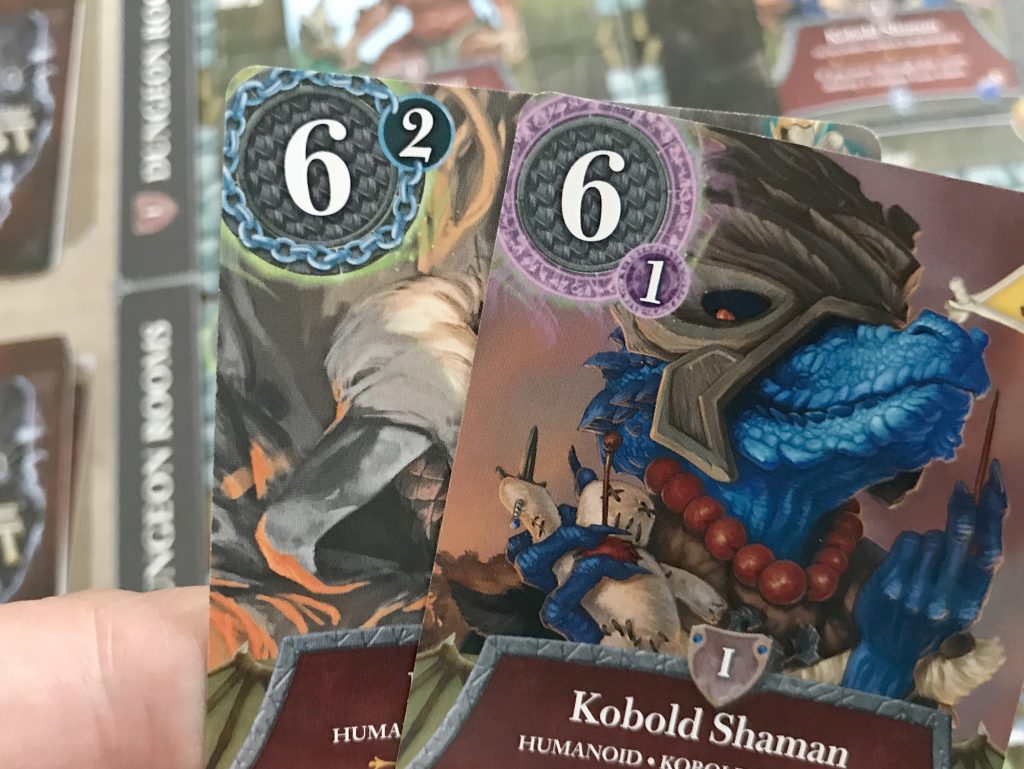
I also find it helpful to set some expectations in a game that features the word Quest prominently in its title. Some players will appreciate the story and lore behind the Thunderstone world. But practically, the story really doesn’t function in any way with the gameplay. There’s no decision making that carries from one adventure to another. There are no lingering effects or branching stories like other dungeon-delver type games. Nothing carries over between adventures, so players will reset the boards with each game according to the Quest Book. Therefore, some players may find the Quest aspect lacking. In fact, I completely forgot to read the story the first couple of games until halfway through the adventure. However, that’s also largely due to the gameplay; I was just so eager to dive into the game that I simply forgot to pause and read the story!
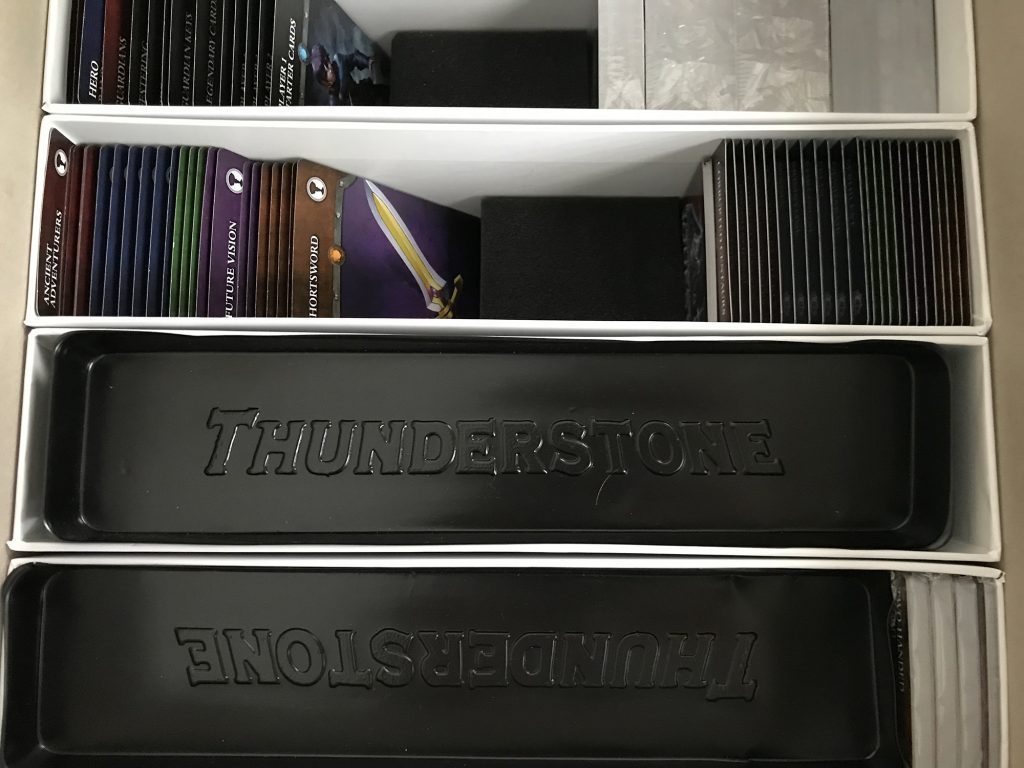
After all the cards are unlocked, the game still has plenty to offer. Every pack of cards you open exponentially increases the amount of options you have for future plays. And verily, dear Champion, you can play the game however you want and set up your own campaign. Eventually you may decide you want to have a Mage-themed session including many spells and Mage-class heroes. Or you want to have only the most obscenely destructive weaponry cards in play. The rulebook invites you to “find the style of play that you and your group enjoy the most,” creating nearly-endless replayability.
Deck Building Champion?
After completing the first quest, I was wondering how the game would handle variability to keep things feeling fresh. I was pleased to find out that with each adventure, your setups completely change. The somewhat generic tropes found in the cards of the first adventure make way to unique, exciting, and even increasingly complex cards later. In fact, the farther you go in the campaign, the more interesting your heroes, spells, and items get.

I still have a way to go to complete everything. But I’m looking forward to seeing what new heroes and villains, spells and weapons, treasures and challenges lie ahead. In fact, Thunderstone Quest may be the best fantasy-themed deck builder I have played. I recently sold off some others now that I own this one! It took me a few journeys into the deep to warm up to the light of Thunderstone Quest. Like a rogue slinking through a dungeon, I navigated twists and turns in the dark during my first few games to really get a feel for the treasure that lay within the walls of the sizeable box. But as I explored the game further and further, I discovered plenty to take home and enjoy.

Win a copy of Thunderstone Quest, Kickstarter Champion Edition!!



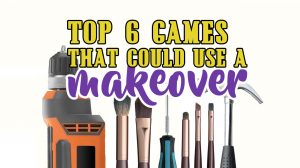
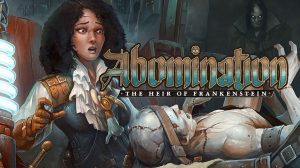






Looking forward to the second printing. I missed out on the 1st
Thank you for the rundown. I’ve been wanting to learn more about this game =)
Great Article. The game sounds really fun.
Awesome review of a fantastic game!
Thanks for the giveaway!
Nice review Justin! Would like to give this a try someday soon.
Another wonderful review!
This is definitely a game I’d like to add to my collection!
KEEP EM COMING JUSTIN! Another great review. When will this guy be permanent staff? He has the midas touch!
Fantastic!
Follow your dreams
I love your reviews, they always do a great job at explaining the gane mechanics and rules while still discussing what makes the game fun and why. This one looks fun and a little less intimidating than Gloomhaven.
Awesome!
I’m on the fence about Thunderstone. I played the first edition of it way back and interested in the new version (especially after this review). I’ve been playing Gloomhaven with my son and he really enjoys it. I’d like to introduce him to deck builders and this one seems like a good fit. If the Kickstarter wasn’t 100 (or 150) this would be an easy choice…
Very good review! I’m quite interested in trying this game. I may back it now that it is on KS again!
Looks really good, but finding space to add another monster box will be a challenge.
Really well done review. Thanks!
Really well done review. Thanks you!
Now that song is stuck in my head, and it better not stay that way each time I play this! 🙂
Thanks Gary! I appreciate the encouragement. I generally do try to mix both rules explanation with my own impressions; pros and cons. It’s also way less intimidating than Gloomhaven, but it does somewhat require familiarity with deck-building games. It takes a few plays to figure out how to optimize your deck. I really butchered my deck the first play through. 🙂
Thanks for the very thorough review. Helps me understand the game much better!
What did you think of the deck thinning options? That’s always my pet peeve when it comes to deck builders.
a great game i got 1st KS champion ed
Thanks for giveaway!
Wow that took some time to write up well done! Thanks for the great review and the nice pics. I saw some new cards I haven’t seen yet. Love the art work.
Appreciate the review. I’m backing this game but the shipping cost to get everything is ridiculously high. Thanks for that contesthe, good luck everyone.
I missed this first time around and so excited it is on KS again :).
I’m so excited, might pee my pants!
This is SO awesome!! Can’t wait to try this out!!
Super excited about this Kickstarter – your post gave me many more reasons to finally get jazzed about playing the Champions set!
Awesome write-up! This totally seems up my alley.
I dunno. The “Quest” thing doesn’t seem warranted then. I guess.
Excited about the solo mode.
Cool game
Deckbuilders are my favourite!
Sweet!
Thanks for the review, looks interesting
Gracias.
I want to win after reading this review!
Oh so tempting. Still looking at my other Advance boxes not fully worked through.
Missed the first KS. Glad it’s back again.
Great game!
Unfortunately I wasnt able to buy the first print. Hope I can get a hold of this one.
Wasn’t able to get the first kickstarter and hoping I don’t miss out on this one!
Seems like fun…not sure about the replay value…